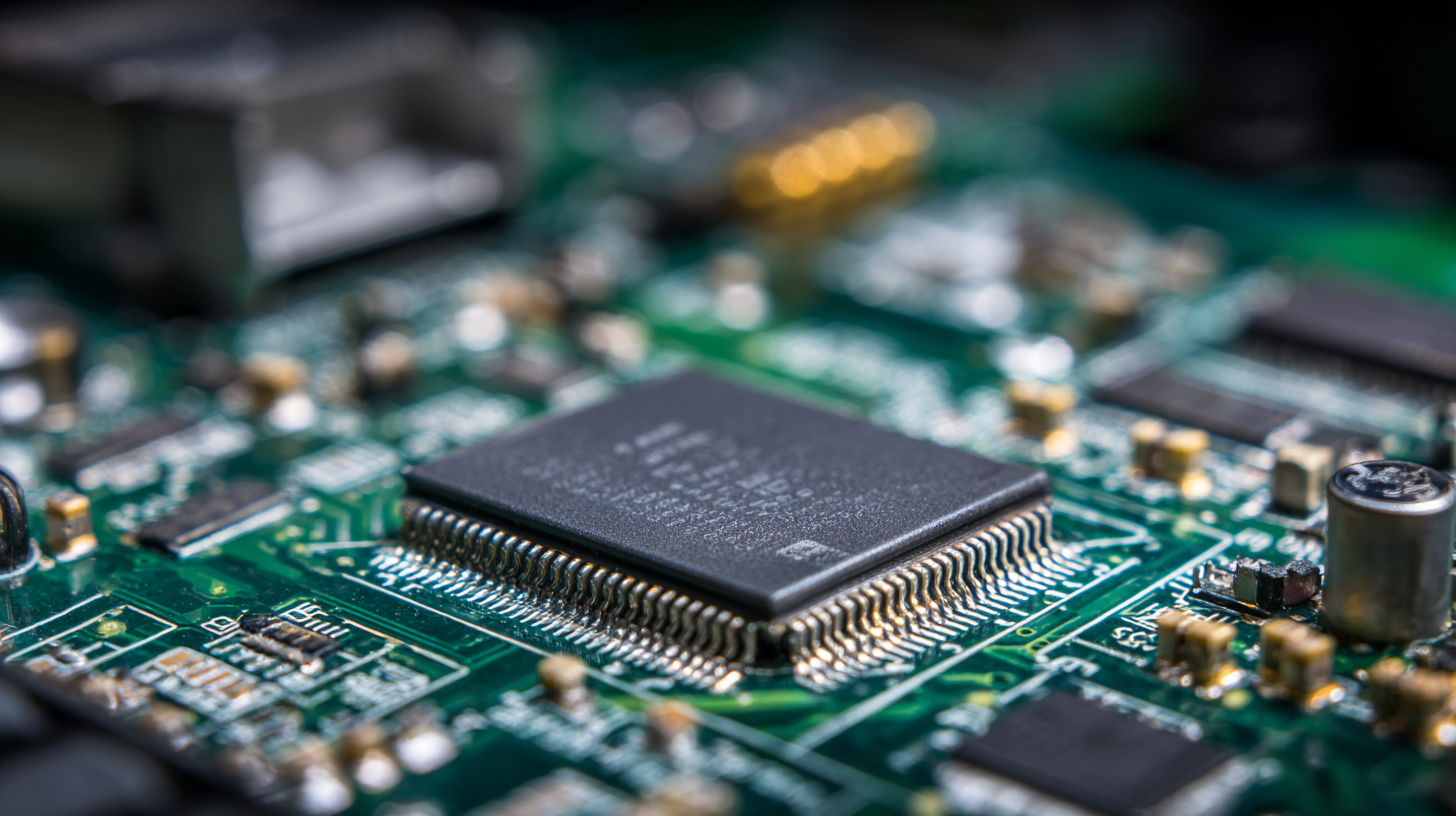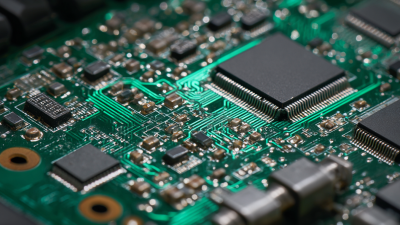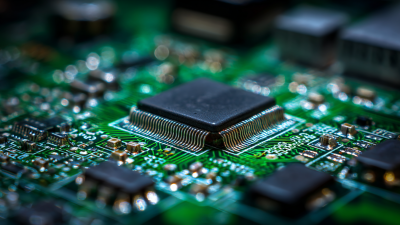How to Choose the Best LED Circuit Board for Maximum Efficiency: Key Factors and Industry Insights
In the rapidly evolving landscape of lighting technology, the choice of an efficient LED circuit board plays a pivotal role in the overall performance and energy consumption of LED solutions. As reported by the U.S. Department of Energy, LED lighting has the potential to save up to 75% more energy compared to traditional incandescent lights, underscoring the importance of selecting the right circuit board. The optimization of these circuit boards is essential not only for enhancing the lifespan of LED products but also for delivering maximum brightness with minimal power input.

Industry insights reveal that advancements in materials and manufacturing processes continue to drive improvements in thermal management and energy efficiency of LED circuit boards. According to a recent report by MarketsandMarkets, the global market for LED circuit boards is expected to grow significantly, driven by increasing demand for energy-efficient lighting solutions. By understanding the key factors that affect performance—such as substrate materials, circuit design, and heat dissipation—engineers and designers can make informed decisions that lead to superior lighting experiences while minimizing environmental impact.
Understanding LED Circuit Board Efficiency Ratings: Key Metrics Explained
When choosing an LED circuit board, one of the most crucial aspects to consider is its efficiency rating. Efficiency ratings indicate how well a circuit board converts electrical power into light output with minimal energy loss. Look for metrics such as luminous efficacy, which measures the amount of visible light produced per watt of electrical power consumed. Higher efficacy ratings often lead to reduced energy costs and longer operational lifespans for LED products.
**Tips for Choosing Efficient LED Circuit Boards:**
1. Check for third-party certifications that verify the board's efficiency ratings, ensuring you choose a reliable and quality product.
2. Compare the lumen per watt figures across different brands to find the most energy-efficient options available on the market.
3. Consider thermal management features in the design, as effective heat dissipation can further enhance the circuit board's performance and longevity.
In addition, keep an eye on how inflation affects overall electronics pricing. With rising costs impacting production, the quest for efficiency becomes even more important. Investing in high-quality, efficient LED circuit boards not only benefits your energy consumption but can also safeguard against future price increases, ensuring more stability in your operational expenditures.
How to Choose the Best LED Circuit Board for Maximum Efficiency: Key Factors and Industry Insights
| Metric | Description | Typical Values |
|---|---|---|
| Luminous Efficacy | Measures the amount of light produced per watt of electrical power consumed. | 80-200 lm/W |
| Color Rendering Index (CRI) | Indicates how accurately a light source displays colors compared to natural light. | 75-95 |
| Operating Temperature | Temperature range within which the LED circuit board operates optimally. | -20°C to 60°C |
| Thermal Management | Effectiveness of heat dissipation to maintain performance and longevity of the LED. | Aluminum heatsinks, thermal pads |
| Modularity | Flexibility to customize or expand the LED circuit board arrangement. | Standardized sizes and configurations |
Material Selection for LED Circuit Boards: Impact on Performance and Longevity
The selection of materials for LED circuit boards is paramount in determining both performance and longevity. Different materials can significantly impact thermal management, electrical conductivity, and overall durability. For instance, aluminum is often favored for its excellent heat dissipation properties, essential for maintaining the efficiency of LED components. On the other hand, FR-4, a fiberglass-based epoxy resin, is widely used due to its good electrical insulation and moderate thermal performance. The choice between these materials largely depends on the application requirements and operating environment.
In addition to conventional materials, advancements in technology have introduced composite materials and metal-core printed circuit boards (MCPCBs) that further enhance performance. These materials not only improve heat dissipation but also contribute to a reduced risk of LED failure over time. Furthermore, considerations such as the board's thickness and surface finish can influence how well the circuit board performs in varying conditions. Ensuring the right material selection can promote longer life cycles for the LED products while maximizing their efficiency, ultimately resulting in better returns on investment for manufacturers and consumers alike.
Impact of Material Selection on LED Circuit Board Performance and Longevity
This chart illustrates the thermal conductivity of different materials commonly used for LED circuit boards. Higher thermal conductivity indicates better heat dissipation, contributing to improved performance and longevity of LED applications.
Thermal Management Solutions for LED Circuit Boards: Strategies for Heat Dissipation
Thermal management is critical in optimizing the performance of LED circuit boards, as excessive heat can lead to decreased efficiency and shortened lifespan. According to a report by the Strategies Unlimited, improper thermal management can reduce the LED lifespan by up to 50% and significantly affect light output. As such, designers must integrate effective heat dissipation strategies right from the circuit board design phase.
One popular technique for managing heat in LED applications is the use of copper-based heat sinks, which can enhance thermal conductivity. A study published in the Journal of Electronic Packaging highlights that thermal conductivity in copper can be as high as 400 W/m·K, making it ideal for efficiently transferring heat away from LED components. Another approach involves the application of thermal interface materials (TIMs), which fill microscopic air gaps between components and heat sinks, further improving heat transfer efficiency. Implementing these strategies not only prolongs the lifespan of LED products but also supports sustainable practices by minimizing energy waste and optimizing thermal performance.
The Role of PCB Design in LED Efficiency: Best Practices and Tips
The design of printed circuit boards (PCBs) plays a crucial role in maximizing the efficiency of LED lighting systems. One of the key aspects of PCB design for LEDs is to ensure optimal heat dissipation. High-quality thermal management prevents overheating, which can degrade LED performance over time. To enhance heat dissipation, consider using materials with high thermal conductivity, such as aluminum or ceramic substrates. Additionally, incorporating thermal vias in the PCB layout allows heat to transfer more effectively away from the LEDs.

When it comes to layout, meticulous attention must be paid to the placement of components. Keeping electronic components that generate heat (like resistors) away from LEDs can minimize the risk of thermal interference. It's also essential to ensure multiple LED placements are uniform to achieve even light distribution.
Tips:
- Utilize software tools for thermal simulations to predict how designs will perform under various conditions.
- Select the right type of solder mask that can withstand higher temperatures to improve durability.
- Regularly conduct prototype tests to gather data on efficiency metrics and make informed redesign choices.
Evaluating Manufacturer Specifications: What to Look for in LED Circuit Boards
When selecting an LED circuit board, evaluating manufacturer specifications is fundamental to achieving maximum efficiency. Key factors include thermal management, power density, and circuit design. According to a report by Strategies Unlimited, the global market for LED circuit boards is expected to reach $10 billion by 2024, underscoring the importance of optimizing these designs for both performance and longevity. A well-designed circuit board can enhance heat dissipation, which is crucial as LED efficiency tends to decline with rising temperatures.
Another critical specification to consider is the board's material composition. High-performance materials like FR-4 or aluminum can significantly impact light output and durability. A study from the Electrical & Electronics Engineers (IEEE) indicates that using advanced materials can improve thermal conductivity by up to 70%, thus enhancing the overall effectiveness of LED lighting solutions. Additionally, examining the manufacturer’s testing standards and adherence to industry certifications such as UL and ISO can provide insights into their commitment to quality and reliability. This due diligence ensures that the chosen LED circuit board not only meets current demand but is also future-proofed for upcoming technological advancements.

Related Posts
-

Top 10 Benefits of Using Printed PCB Boards for Your Electronics Projects
-
Mastering Circuit Board Design Fundamentals for Beginners in Electrical Engineering
-

Top 10 Printed PCB Board Insights: Trends, Market Value & Manufacturing Innovations in 2023
-

The Future of Electronics: How Flexible Printed Circuit Boards are Revolutionizing Device Design
-

How Printed Circuit Boards Shape the Future of Technology with Insights from Industry Trends
-

Understanding the Essential Role of Printed PCBs in Modern Electronics
